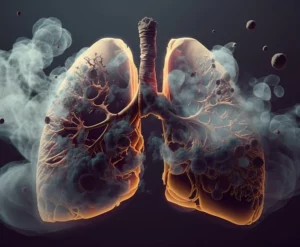 A recent study from the National Institute for Occupational Safety and Health (NIOSH) and the University of Illinois Chicago found that modern coal miners, particularly those in Central Appalachia, are more likely than their predecessors to die from respiratory diseases, according to the U.S. Department of Labor. (Photo illustration: Viktoriia/Adobe Stock)
A recent study from the National Institute for Occupational Safety and Health (NIOSH) and the University of Illinois Chicago found that modern coal miners, particularly those in Central Appalachia, are more likely than their predecessors to die from respiratory diseases, according to the U.S. Department of Labor. (Photo illustration: Viktoriia/Adobe Stock)
Author: Ed Meredith SCLA
Published by ALM Media | PropertyCasualty360
Claims are on the rise, so employers need to start thinking about what their long-term strategy for the disease will be.
When most people think of diseases and ailments impacting our nation’s workforce, coal workers’ pneumoconiosis (CWP), commonly known as “black lung disease,” would likely not be the first to come to mind.
For America’s coal industry, however, the infamous condition continues to plague miners and remains a complicated issue for those in the space.
Black lung represents a long-standing, incessant issue that is more complicated than most people think, especially given that the disease has the potential to impact someone for a lifetime. Handling the claims of those afflicted with black lung disease is vital to the miners and employers supporting life-long conditions.
Federal government concerns
To understand the situation with federal black lung, we need to go back to 1972, when American lawmakers first implemented the Black Lung Benefits Act. The intent was to provide monthly payments and medical benefits to coal miners disabled from black lung disease working in or around the nation’s coal mines. Additionally, the law requires employers to provide monthly benefits to dependent survivors if the disease caused the miner’s death.
Eligibility for benefits has changed over the years, most recently in 2010, when a policy change provided widows automatic benefits if the miner had filed their claim after Jan. 1, 2005. Prior to that from January 1982 to December 2004, the widow had to file their own claim and prove that the miner’s death was caused or hastened by black lung. Obamacare reinstated the law in effect prior to 1982.
Unlike state injury claims, the law forces federal black lung claims to go through a specific litigation process with the U.S. Department of Labor. In these situations, each party is allowed the same provisions to submit supportive and rebuttal evidence. Select experts approved by the DOL’s Black Lung Program evaluate testing results and if the evidence supports the worker’s claim, they will receive benefits.
Black lung and the claims process
Oftentimes, miners file federal and state claims simultaneously. Under the federal occupational disability regulations, if a plaintiff is awarded federal and state black lung benefits, the miner cannot receive indemnity benefits exceeding the federal rate. As a consequence, it becomes incumbent on the third-party administrator (TPA) to be knowledgeable of state and federal claims systems.
The federal occupational disability regulations provide the offset provision. Knowing the exact benefits which have been afforded to a miner is critical in assuring that benefits are paid properly to avoid indemnity overpayments. In addition, it is vital to confirm the type of state disability claim that a miner was awarded.
For example, if a miner is awarded federal benefits but also has a state occupational disability award for complicated coal workers’ pneumoconiosis (CWP), that miner’s medical benefits would fall under the state award and not the federal. This provides the TPA, representing the employer, more controls over the medical treatment in how its delivered. It subsequently offers the ability to secure fee schedule and PPO discounts on that treatment which reduces costs.
However, if the miner in that example was provided a state black lung award based on simple CWP then under that state claim the miner would only be entitled to certain medications and treatments for the condition per state regulations.
These complex medical matters require knowledgeable black lung claims management staff and a team of medical professionals to review the treatment to assure it is appropriate, necessary, and related to the condition of CWP. It’s also imperative that black lung adjusters, nurses, and physicians are experts in Occupational Disease and take a holistic approach when reviewing medical treatment associated with CWP, recognizing that not every treatment in relation to pulmonary functions are necessarily a result of this disease.
Particularly when looking at aging work forces, there are many factors that impact a miner’s health. It is essential that all factors are taken into consideration when making determinations of coverage of certain medical conditions.
Black lung on the rise
One might assume that due to advances in technology, reduction in demand for coal, and awareness of the disease, black lung would be fading away and becoming less of a threat to coal miners and workers today. Surprisingly, the opposite is true. In fact, a recent study from the National Institute for Occupational Safety and Health (NIOSH) and the University of Illinois Chicago found that modern coal miners, particularly those in Central Appalachia, are actually more likely than their predecessors to die from black lung, as well as other lung diseases like COPD and lung cancer.
For the P&C industry, this counter-intuitive trend is an ongoing challenge. Like most modern industries, the coal mining industry has implemented a number of updated safety precautions to attempt to prevent and fight the disease among miners. These companies face a plethora of regulations surrounding their safety procedures and undergo regular inspections to ensure compliance.
So why have these measures not translated to lower rates of the disease among our mining workforces today?
Claims process can muddy the numbers
The answer to the above question is tricky because of how black lung claims work. For example, many coal miners in the US are referred to as “frequent fliers” of the DOL claim process. This refers to claimants that will file a claim to obtain the DOL’s pulmonary evaluation but will then immediately withdraw their claim. There isn’t any restriction on how often you can do this, so many miners realize they can file as often as they want. This can lead to an artificial increase in black lung claims, even though the figures could just be reflective of a smaller group making multiple claims for themselves. A number of miners today are actually developing symptoms of black lung and trying to go through the system the right way. However, with the rising influx of claims these miner’s ‘legitimate’ claims can get buried beneath the many ‘frequent flier’ claims, making it a more tedious process and challenge for the P&C industry and DOL docket to determine which claimants are legitimate compared to others that might just be testing the waters.
On top of this is the fact that although a number of new safety regulations requiring miners to use special face masks and protective equipment exist, certain miners have been known to skip requirements because it’s easier for them to do their job despite the fact that the regulations are there to protect them. Many miners are adhering to the new types of guidelines being implemented, but with any industry going through change, there will always be resistance to it.
Increasing liabilities
On top of increasing claims, the industry is also seeing liabilities increase. That’s according to a recent report from Milliman, which found that employer liabilities for black lung occupational disease claims have ballooned — to an estimated $9 billion and perhaps more than $14 billion as of last year. This may not be sustainable long term. The report concludes by noting that if employers are unable to pay the increasing number of claims, US taxpayers may ultimately be stuck with the check. To complicate matters, federal black lung claims may not be compromised or settled – and are one of the longest tail claims, providing lifetime benefits for affected miners, and dependent benefits for decades thereafter.
Going forward
For the P&C industry, it’s clear that black lung isn’t going away, and although there continues to be a market-wide push for greater regulations and protections for workers, claims and liabilities for black lung are on the rise, so employers need to start thinking about what their long-term strategy for the disease will be.



